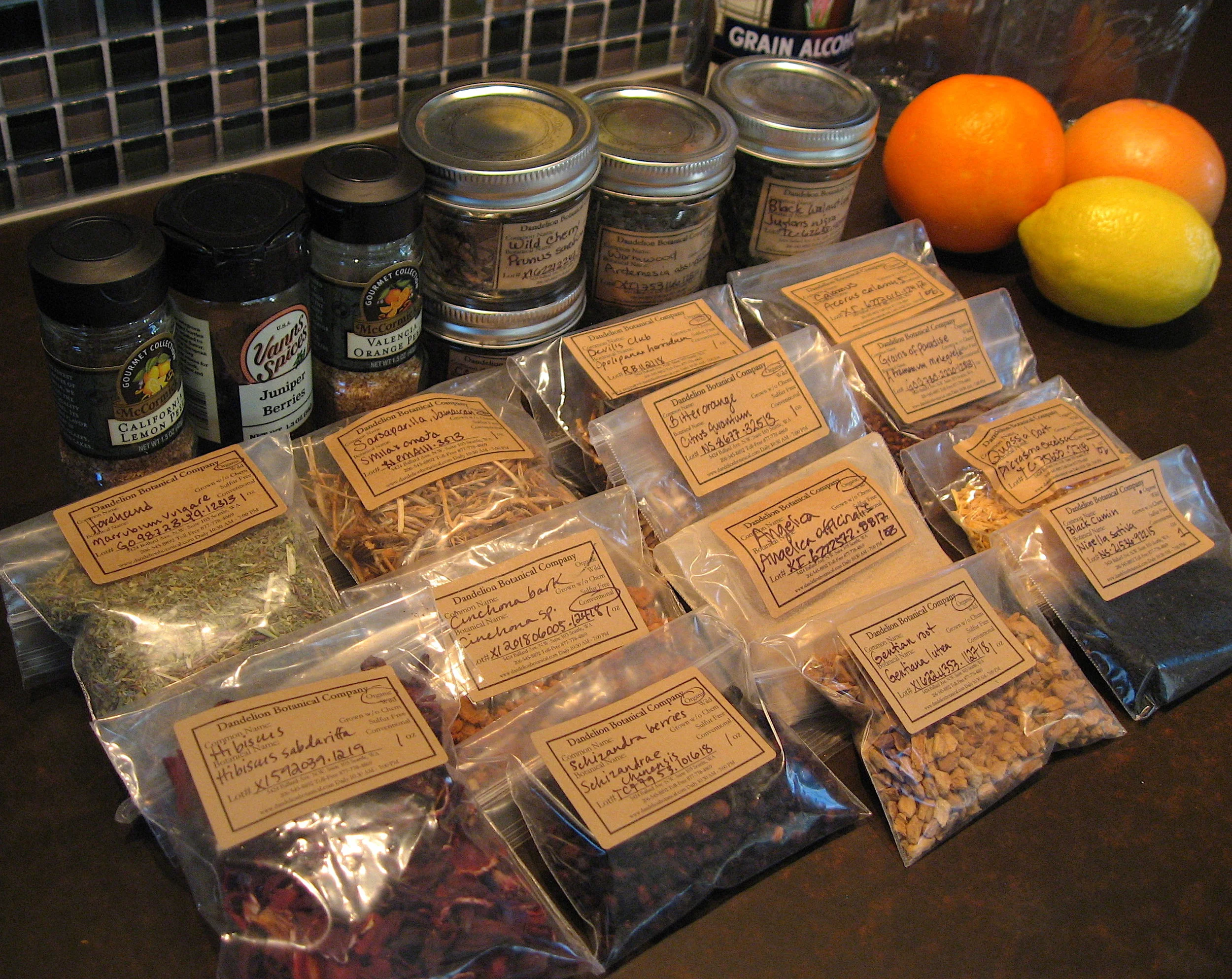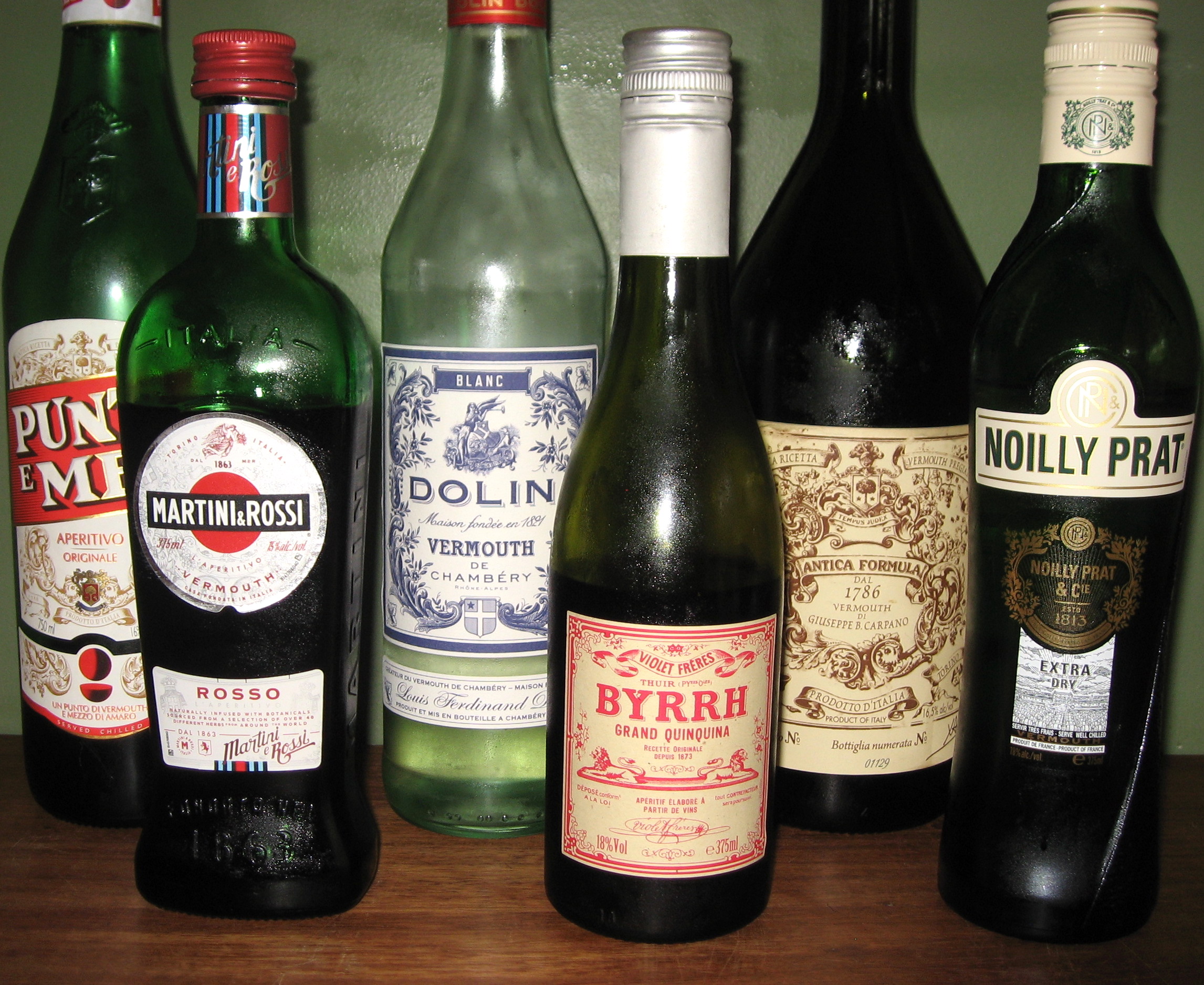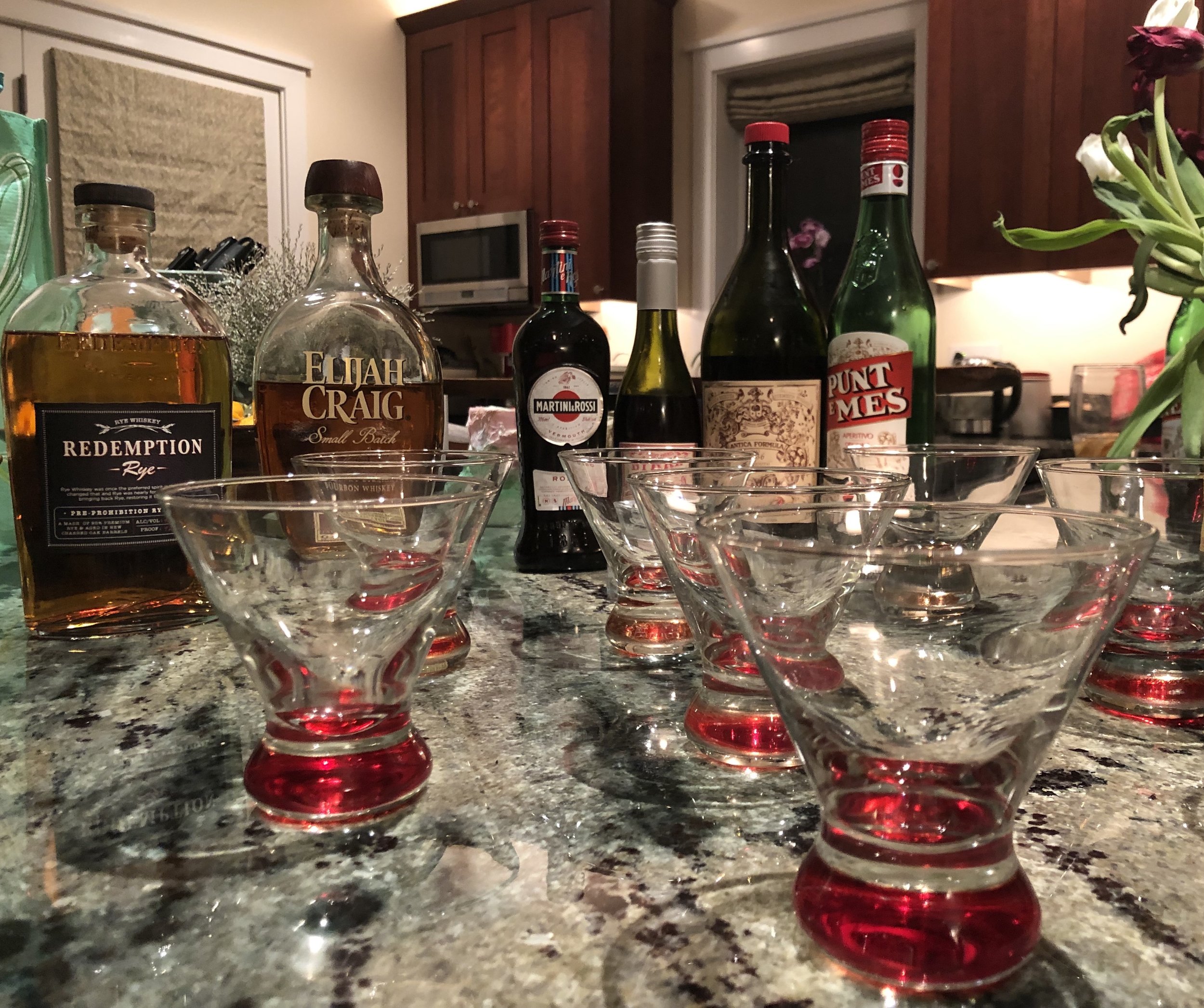Wine-based apéritifs

Attention, class! Cocktail school is now in session. Today’s topic: wine-based apéritifs.
What, you may ask, is an apéritif? Excellent question!
An apéritif is a pre-dinner drink, often served with snacks. Low in alcohol, its flavors are designed to stimulate the appetite. The range of beverages that qualify as apéritifs is huge, and varies by country. In Italy, you’re likely to find a citrusy Aperol spritz or limoncello offered before the meal. In France, it’s probably a kir (crème de cassis and white wine) or anise-flavored pastis. In Spain, they serve up delicious dry sherry accompanied by tapas.
But I’m particularly interested in wine-based apéritifs, also known as aromatized wines, and their use in mixed drinks. After fermentation of the grapes, the wine is macerated with herbs and spices and roots and peels to impart flavor, and fortified with additional alcohol to extend the shelf life. The wine can be sweet or dry, red or pink or white, and the mix of ingredients so diverse that the flavors vary wildly.
You claim you’ve never heard of wine-based apéritifs? Nonsense!
Undoubtedly, you’re familiar with vermouth, which I’ve written about previously. Vermouth derives its name from wormwood (‘wermut’ in German), the ingredient that contributes a pleasingly bitter bite. Wormwood is not the only bittering agent used in aromatized wines: others include cinchona bark (from which anti-malarial quinine is derived) and gentian root. In some cases, the degree of bittering is so pronounced that the wine is classified as amaro.
I’ve managed to accumulate a few uncommon examples in the course of my drink-making forays. Vermouth del Professore Rosso is - as the name indicates - a vermouth, sweet and red, the classic wormwood bitterness balanced by herbal notes of balsam and sage. Quite the tasty sipper, it truly shines in a rye Manhattan. Cappelletti Aperitivo is the less-assertive cousin of bitter-orange Campari, and an excellent substitute in a more mellow Negroni. Pasubio Amaro, a key component of the Iron Path cocktail, ups the bitter quotient, balanced by the flavors of blueberries and pine. The most recent addition to my collection is Bonal Gentiane-Quina. Its rich taste of prunes and raisins is complemented by hints of citrus and licorice, all backed by gentian and cinchona bitterness. Four different apéritifs, four very different flavor profiles.
All this talk of apéritifs has made me thirsty. I think that’s enough for one session - class dismissed!
h.




